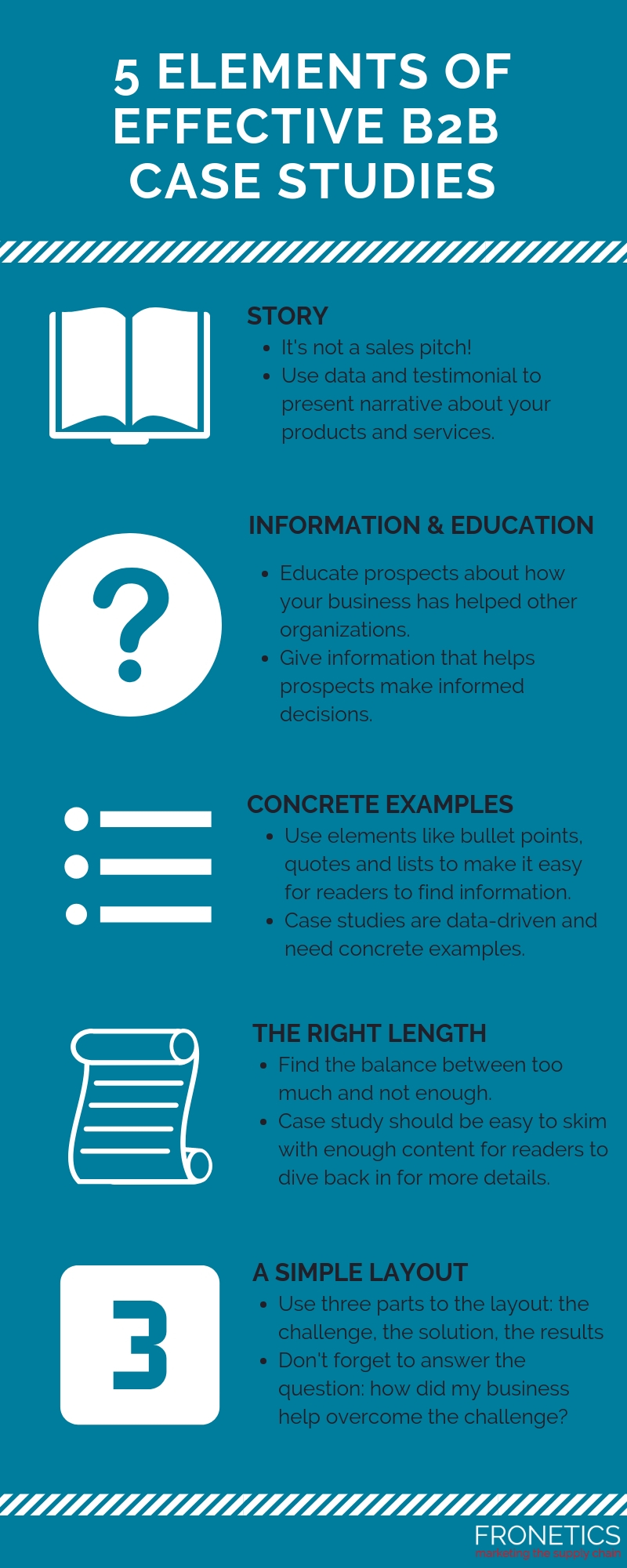For B2B buyers, case studies are still the most popular type of content. Check out our infographic below to discover the five elements of an effective B2B case study.
Did you know that 89% of B2B marketers consider customer testimonials and case studies to be the most effective kinds of content in converting buyers? A well-written case study engages prospects and generates leads. But what is an effective case study? And how do you create one?
[bctt tweet=”Did you know that 89% of B2B marketers consider customer testimonials and case studies to be the most effective kinds of content in converting buyers?” username=”Fronetics”]
These five elements are the key to maximizing the effectiveness of your case study:
1. Story
While it’s true that case studies are about the data, what makes them attractive to buyers is the story. This isn’t a sales pitch — it’s an opportunity to use data and testimonials to present a narrative to prospects about how your products and services helped another business.
2. Information and education
Think of your case study as an opportunity to educate your prospects about how your business has helped organizations similar to their own. Again, this is not a sales pitch. In fact, case studies that are written as sales pitches tend to be ineffective. A case study gives your prospects information and educates them so they can make an informed decision about what’s best for their business.
3. Concrete examples
Case studies are data-driven and offer concrete examples. This is one of the primary reasons they are a high-performing content type. An effective case study makes it easy for readers to find the information they’re looking for, using elements like bullet points, quotes, and lists to clearly and concisely convey key data.
4. The right length
There’s a delicate balance between presenting complete information, telling a story, and avoiding minutia that’s too specific to matter to your prospects. Ideally, you want your reader to be able to skim quickly and get an overall view, and then dive back in for more details. If your case study leaves your prospect with questions about how your products and services helped another business, chances are it doesn’t include enough information.
5. A simple outline
- The Challenge: What challenge or challenges was your customer facing before working with you?
- The Solution: How did your business address the challenges your customer was facing?
- The Results: How do your metrics demonstrate the immediate and ongoing results of your solution?
The takeaway
Case studies are your opportunity to use your successes to create a narrative, supported by key metrics, that demonstrates how your business successfully addressed the challenges faced by your customers. Telling a compelling story is one of the best ways to engage your prospects and convert leads.
Related posts:



